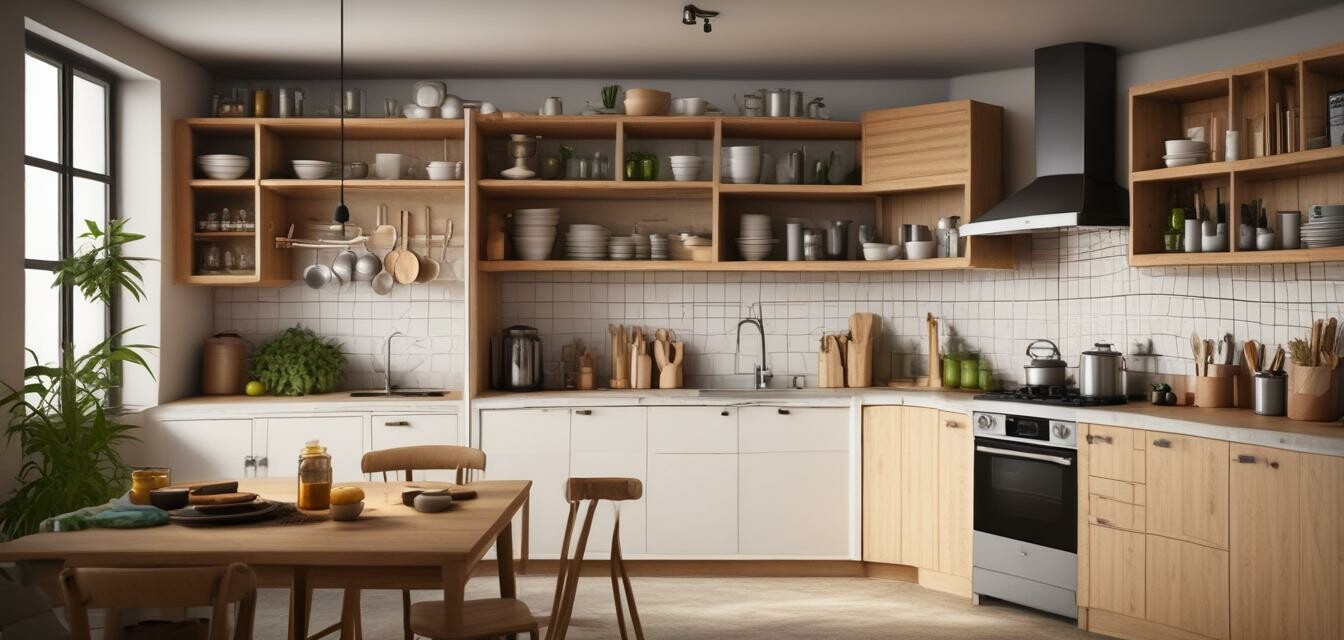
Sustainable Kitchen Solutions for Small Spaces
Key Takeaways
- Maximize vertical space with shelves and wall-mounted storage.
- Utilize multi-functional kitchenware for efficiency.
- Incorporate eco-friendly materials like bamboo and recycled items.
- Enhance energy efficiency with smart appliances.
- Optimize organization with compostable kitchen tools and storage solutions.
As living spaces get smaller, especially in urban areas, the need for sustainable kitchen solutions that fit into compact designs is becoming increasingly important. An eco-friendly kitchen can be achieved without sacrificing style or functionality. Below are innovative ideas and products that will help you create a sustainable kitchen in a limited space.
Maximizing Vertical Space
When you have limited floor space, making the most of your vertical space is crucial. Here are some ideas to do just that:
- Install shelves above countertops or cabinetry.
- Use hooks or magnetic strips for hanging utensils.
- Consider wall-mounted racks for pots and pans.
Example of Vertical Storage Solutions
| Type | Description | Eco-Friendly Material |
|---|---|---|
| Shelves | Floating shelves for displaying herbs and spices. | Bamboo or reclaimed wood |
| Hanging Racks | Ceiling-mounted racks for cookware. | Stainless steel |
| Magnetic Strips | Magnet strips for easy access to knives. | Recycled metal |
Multi-Functional Kitchenware
Using multi-functional kitchenware reduces clutter and promotes sustainability.
Top Multi-Functional Kitchen Tools
- Stackable containers: Ideal for food storage and save space in the fridge.
- Convertible kitchen tools: Utensils that can serve multiple purposes, such as a spatula that converts to a whisk.
- Compact tableware: Plates and bowls that stack neatly for storage.
Eco-Friendly Materials and Products
Incorporating eco-friendly materials into your kitchen not only embraces sustainability but also enhances your kitchen's design. Consider these materials:
- Bamboo: This highly sustainable material is perfect for kitchenware like cutting boards, utensils, and storage containers.
- Recycled glass: Using recycled glass for dinnerware and storage creates a stylish and sustainable kitchen atmosphere.
- Compostable products: Choose tools that are compostable, reducing waste in landfills.
Explore more on Bamboo Kitchenware to see eco-friendly options available.
Energy-Efficient Appliances
Choosing the right appliances can significantly impact your energy consumption. Opt for:
- Energy-efficient dishwashers and microwaves that save electricity.
- Induction cooktops that can cook food quickly and conserve energy.
- Smart refrigerators that optimize energy use.
For more sustainable options, check out our section on Energy-Efficient Appliances.
Eco-Friendly Storage Solutions
Proper storage can make a big difference in maintaining a tidy kitchen. Use:
- Reusable silicone bags: Great for storing food and snacks without adding plastic waste.
- Compostable bins: A dedicated space for organic waste promotes composting practices.
- Clear containers: Easily see contents without having to dig through cabinets.
Consider exploring our Eco-Friendly Storage Solutions for practical ideas.
Beginner's Tips for Creating an Eco-Friendly Kitchen
- Start with small changes, like switching to bamboo utensils.
- Reduce single-use plastics by investing in reusable containers and bags.
- Keep your countertops uncluttered to promote a more functional space.
Conclusion
Creating a sustainable kitchen in a small space is entirely possible with the right strategies and products. By utilizing vertical space, selecting multi-functional kitchenware, opting for eco-friendly materials, and investing in energy-efficient appliances, you can create a functional and environmentally friendly kitchen. Remember, each small change contributes to a bigger impact on our planet.
Pros
- Space-saving solutions allow for better organization.
- Eco-friendly materials help reduce environmental impact.
- Multi-functional tools save money and space.
Cons
- Initial costs may be higher for sustainable products.
- Smaller kitchen appliances can lack some traditional features.



